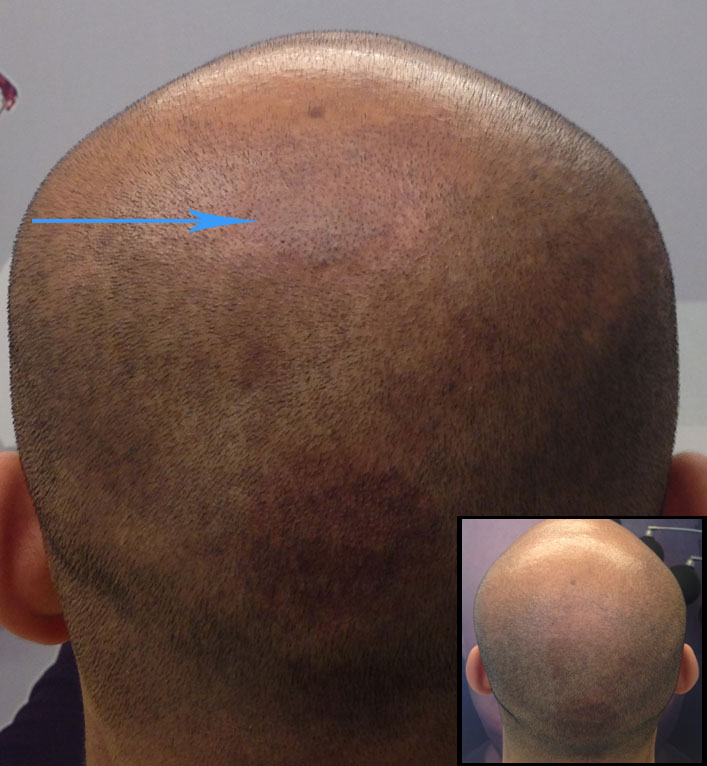All clients having scalp micropigmentation have the option of a patch test before treatment
There seems to be a lot of mystery around the patch test, who has one, for what purpose and what it is intended to achieve. Here we dispel a few myths and explain what the patch test is really for.
Let’s start with a few myths you may have heard:
Myth #1 – Everyone has/needs a patch test
This is entirely untrue, in fact only around 2% of all our clients have a patch test before their treatment. A patch test is available to all, but only actually suggested or requested when either the client or their practitioner believes it would be prudent.
Myth #2 – Patch tests are to assess what pigment shade is needed
This is also incorrect. Different parts of your scalp will absorb the pigment in entirely different ways, therefore it is impossible to use a patch test to judge the most appropriate pigment shade required.
Myth #3 – Your scalp will look odd after a patch test
This is also untrue. Patch tests typically cover a very small area and are barely distinguishable, even to the client. The dot spread is also very sparse. As a result, it is highly unlikely that anyone will ever notice your patch test once the pigments have settled.

So what exactly is a patch test for?
The proper use of a patch test is for two primary purposes – to check for any reaction to the needle or pigment, and to enable the client to assess the level of discomfort they are likely to experience during their treatment.
The photos above and below show a patch test immediately after application. Please note this patch test was conducted for the purposes of being photographed, and is therefore significantly larger than a regular patch test. You can expect your patch test, if you choose to have one, to be less than a quarter of this size.

Every so often, a client comes to HIS Hair Clinic who by their own admission, is particularly prone to allergies and reactions. Such clients usually express a concern and ask a different set of questions to what regular clients do. In such circumstances, we may recommend a patch test. The pigment is applied, and left to settle for a two week period. If no reaction is observed, the client usually proceeds with their full treatment.
It is important to note that any kind of reaction to the pigment or needle is extremely rare. When they do occur, the reaction is never severe and rarely lasts more than a few days. Reactions include swelling, itching and small lymph node related lumps that disappear shortly after they arrive.
Finally, a client who is particularly concerned about the level of discomfort they are likely to experience, sometimes request a patch test so they can test drive the pain level before committing to treatment. Pain levels are generally very manageable. For more information see this post.
